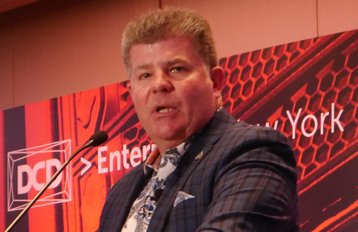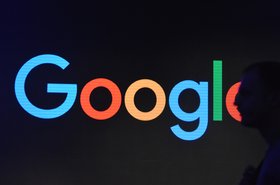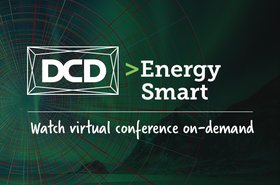During the coronavirus pandemic, the world is relying on digital infrastructure, Google's vice president of data centers told DCD's virtual New York conference this week.
Despite challenging spikes in usage, Google is stepping up to keep services running, Joe Kava told an audience at DCD>New York VIRTUAL, DCD's biggest online event, staged in response to restrictions caused by the Covid-19 pandemic. The company is also managing to exceed efficiency goals, he said, in a presentation focusing on the adoption of renewable energy in the sector.
Unprecedented
"There is nothing normal about the situation we currently face," said Kava. "And more than ever the world is counting on us." Google is seeing "unprecedented spikes in demand across the world," he said, showing an image of ever-changing Google searches, and praising data center staff for keeping services going.
"I want to express my thanks to all of our team around the world, that are keeping this infrastructure running around the clock, even in these unprecedented times that we are living in," he said, describing the infrastructure Google operates, including investments in submarine cables.
Google's focus on owning its own backbone infrastructure is taking the strain from network providers and allowing them to focus on the last mile of service delivery, said Urs Hölzle, senior vice president of technical infrastructure at Google in a blog last week: "Handling traffic on Google’s infrastructure and bringing it close to people helps limit the burden on operators - whose networks have different levels of reserve capacity - to allow them to focus on delivering that last mile."
Google's network supports products that people around the world rely on every day, like YouTube, Search, Maps, and Gmail. It also connects Google Cloud customers to their employees and users. As the coronavirus pandemic spreads and more people move to working or learning from home, it’s natural to wonder whether Google's infrastructure is up to the task.
Reports of glitches in Google Cloud, seem to have been more to do with network hardware issues than demand.
Shifting to his scheduled subject, Kava said that data center energy has been a concern, but the industry has responded with increased efficiency, without being forced to do so, he said: "I am particularly happy with how the industry has self-governed in terms of energy efficiency in the data centers," he said.
In the eight years between 2010 and 2018, data centers globally have increased their workloads by 550 percent, but their energy use has gone up much more slowly: "Even though naysayers said the consumption of energy was going to skyrocket, overall energy grew by only six percent."
Early in this period, it seemed that efficiency had reached a plateau around 2012, but Google moved beyond that in 2019, through the use of AI, said Kava: "We made a breakthrough and improved our PUE. Now our global average is 1.1. Some people say that’s not a big improvement, but when you are doing it at a global scale it amounts to many millions of hours of energy savings a year."
The AI-enabled cooling of its data centers initially got some 12 percent of improvement in cooling efficiency, but this has now improved to 30 percent, said Kava, measured in kilowatts per ton, or the amount of energy required to remove a certain amount of heat.
Data centers will always use energy of course, so Google, along with other infrastructure providers, has committed to be carbon neutral, to cancel out the emissions of the energy it uses. The company initially achieved this in 2007 through carbon offsets, but has since shifted to using renewable energy more directly, buying it through power purchase agreements.
Google is now the world's largest corporate consumer of renewable energy, having signed agreements for more than 5.5GW of renewable power, including 18 agreements announced in September 2019, which add up to the biggest ever corporate purchase of renewable power.
The company is now working to try and match energy use hour by hour with actual renewable energy production, through closer agreements with electrical grid providers.





